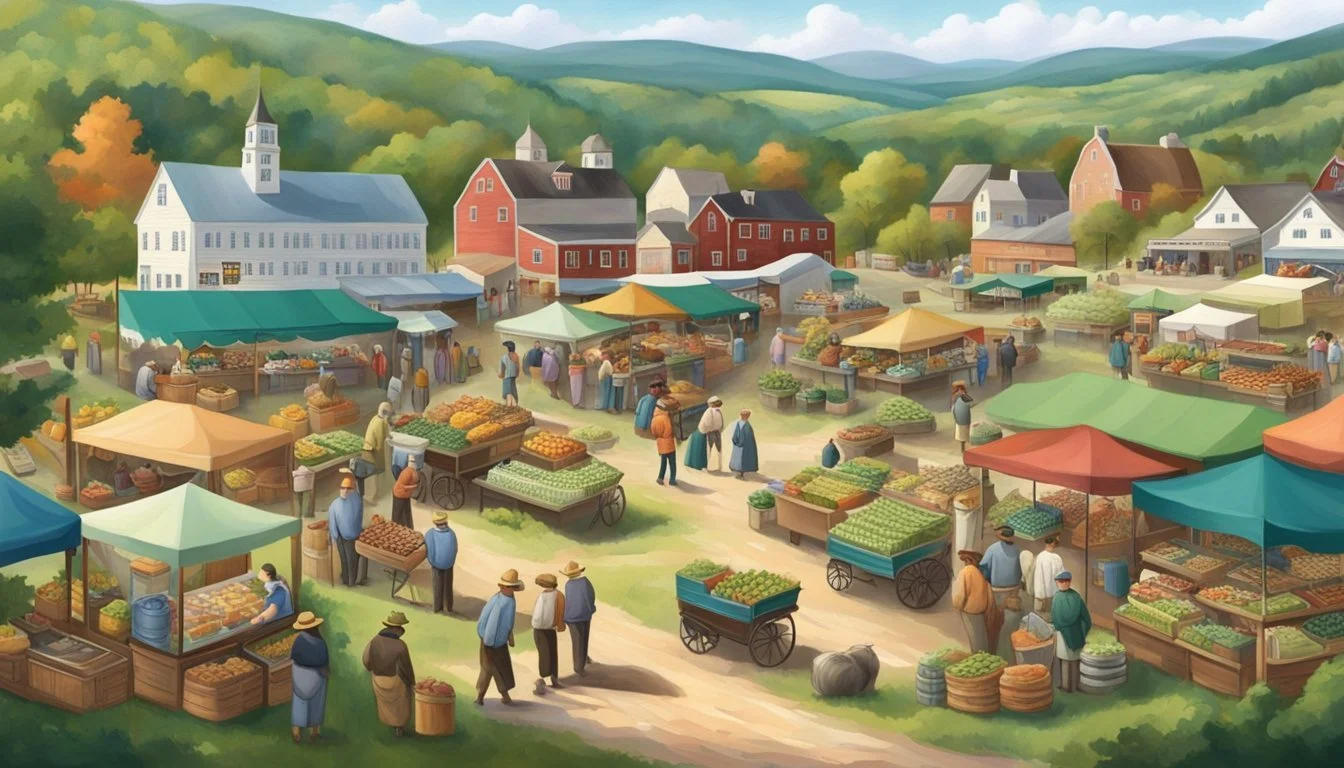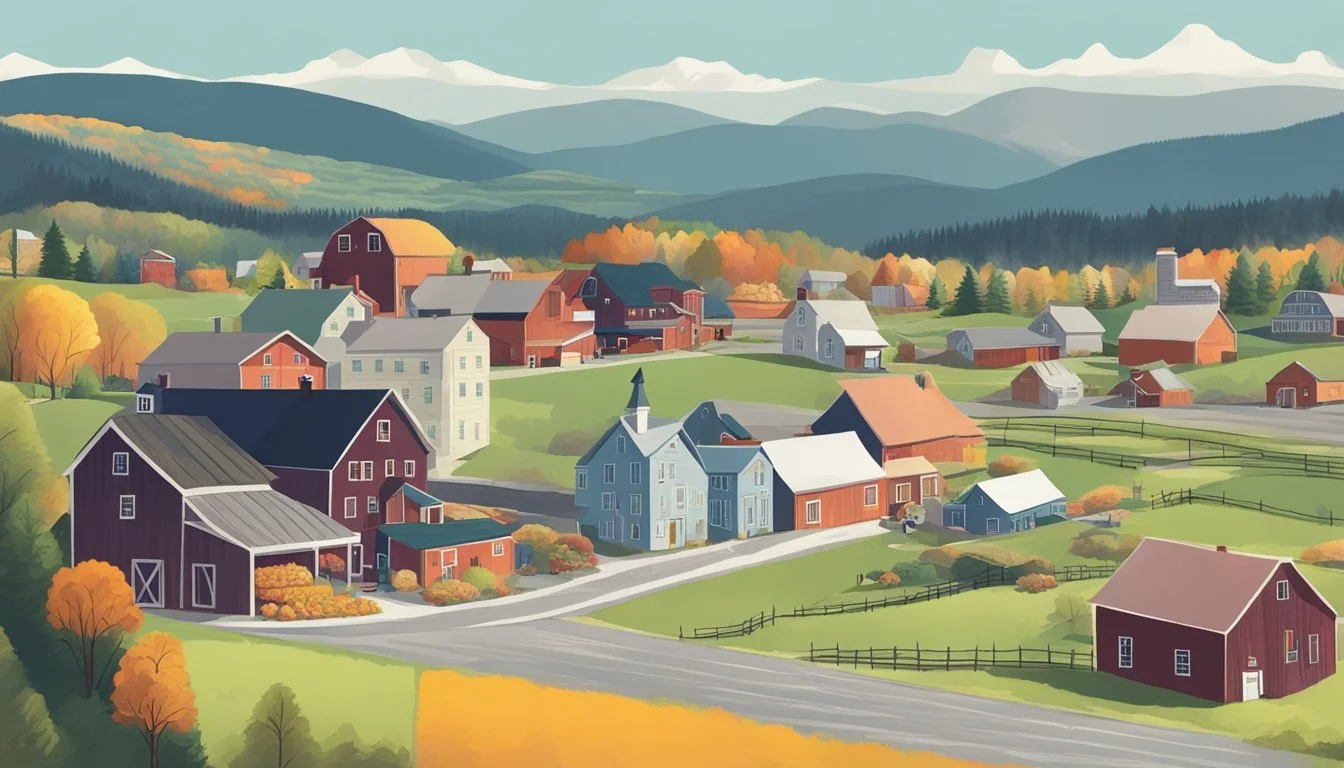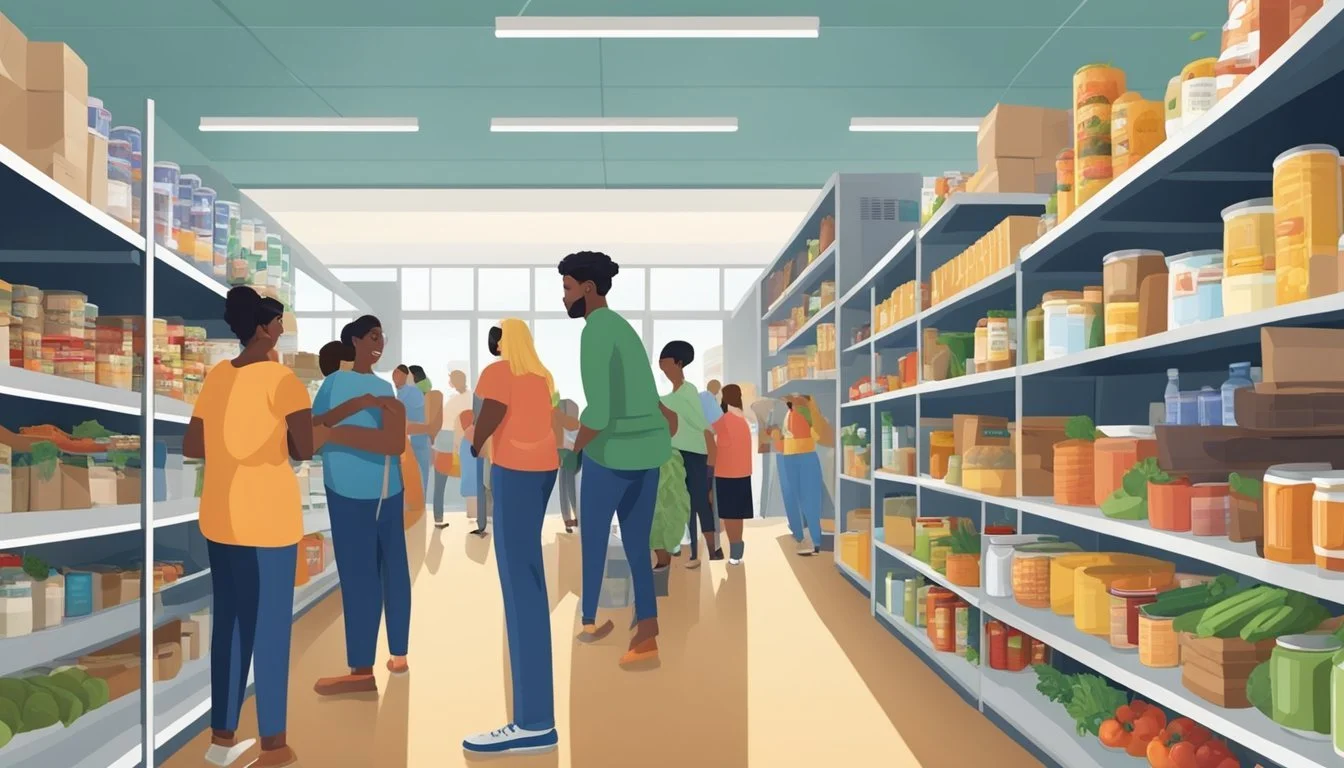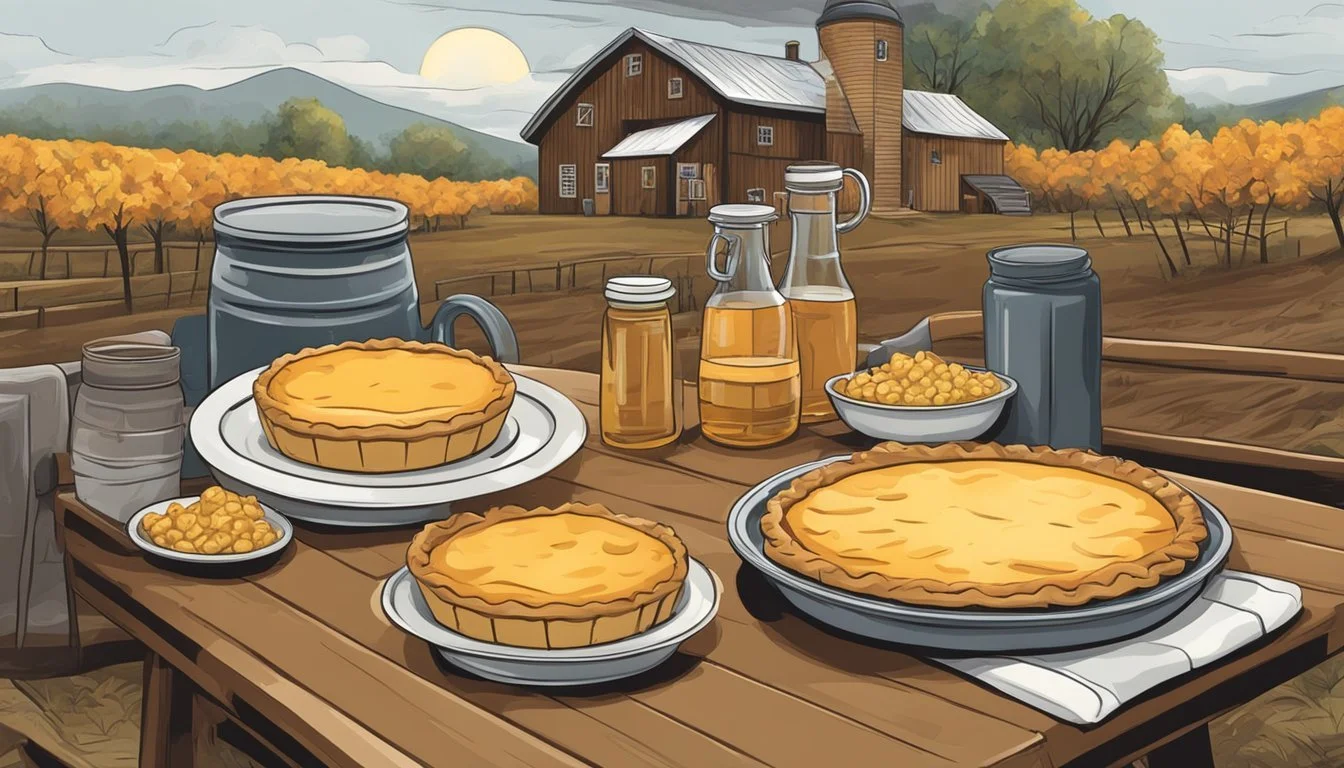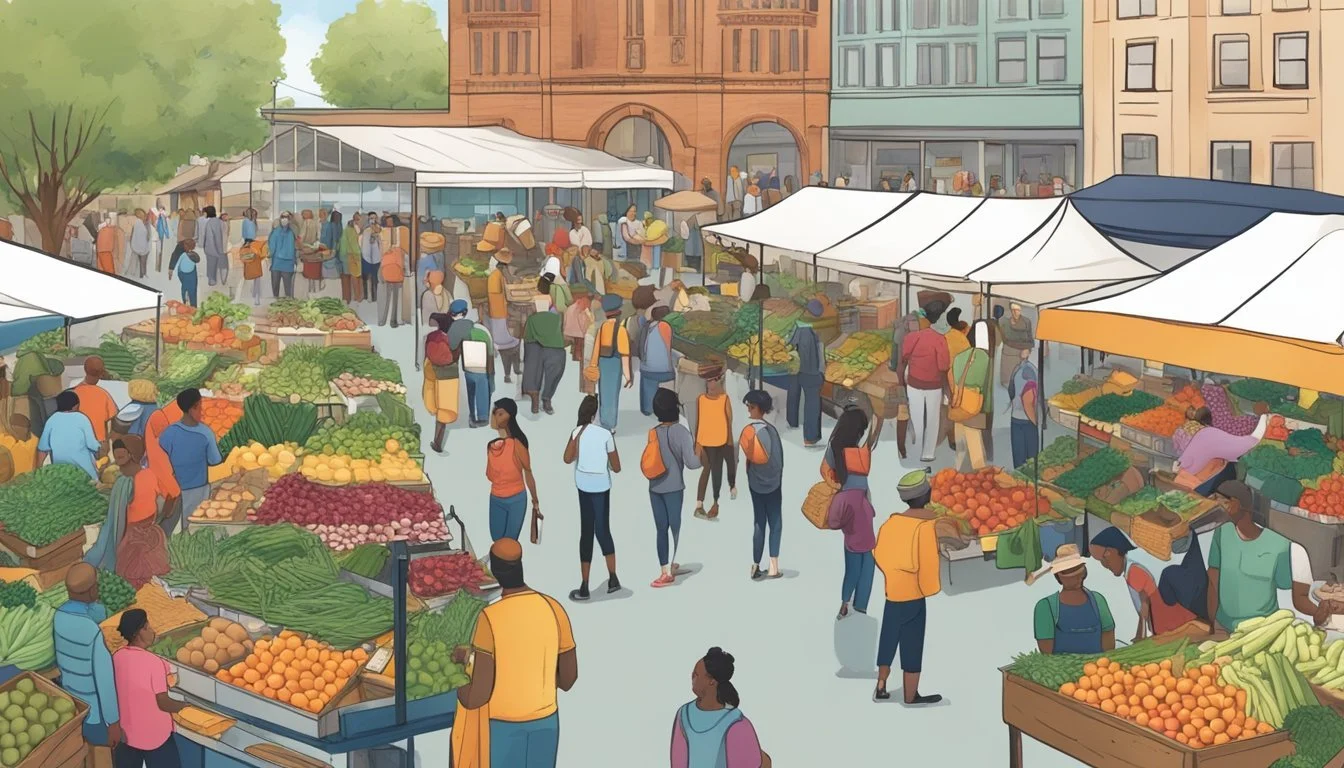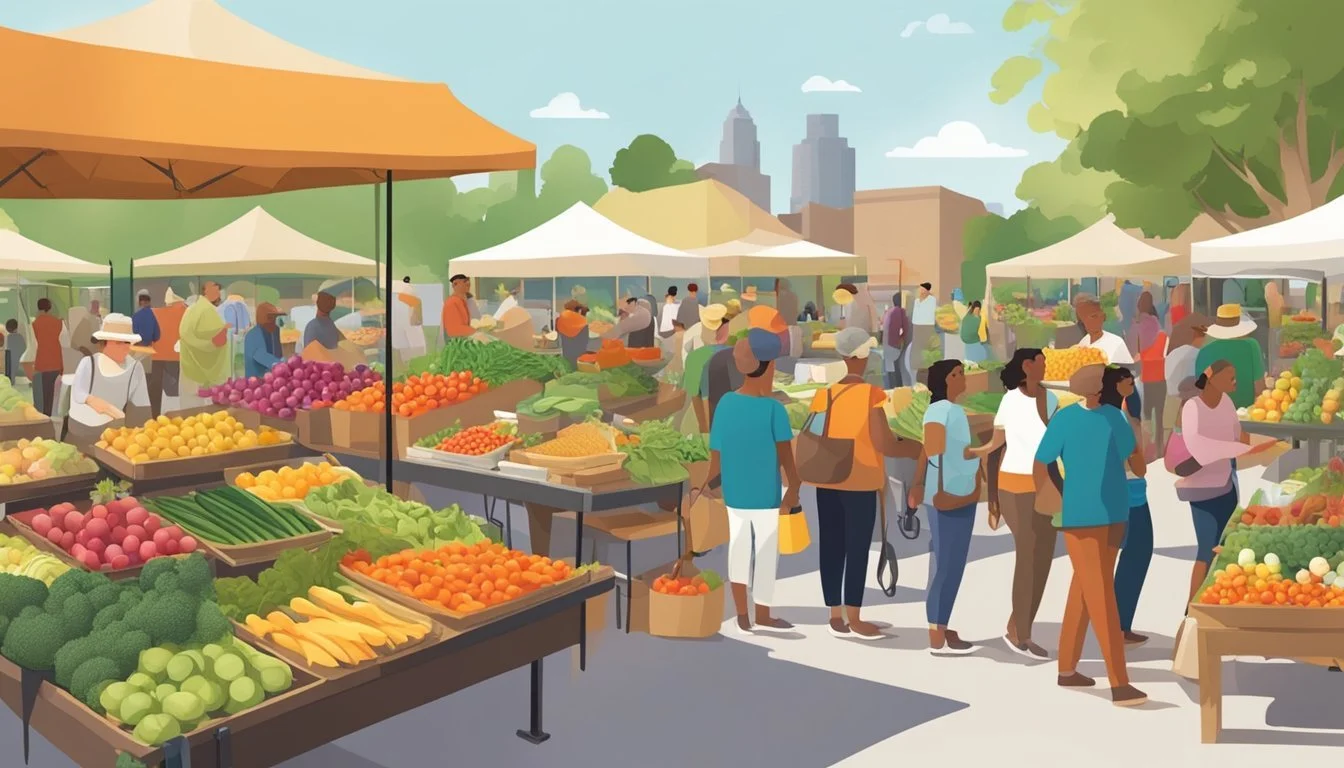Vermont Food Challenges
Conquering the Green Mountain State's Toughest Eats
Vermont, known for its picturesque landscapes and rich culinary culture, offers a hearty array of food challenges for locals and visitors alike. These epicurean feats are not for the faint-hearted, presenting challenges that range from excessive portions to the spicy and the swift. Restaurants across the state have crafted unique eating contests that serve as both a testament to human appetite and a celebration of local cuisine. These competitions often feature Vermont's staple ingredients, turning ordinary meals into extraordinary challenges.
Food challenges in Vermont have garnered attention not only for their size but also for the variety they offer. From towering burger stacks and oversized breakfast platters to gut-busting quantities of maple-infused treats, these contests are designed to test the limits of gastronomy. It's an invitation to indulge in the state's local flavors while enjoying the camaraderie that inevitably develops among participants and spectators. Each event encapsulates the Green Mountain State's love for food and entertainment, and they often become a talking point for both successful conquerors and those who've gamely accepted defeat.
Amidst the fun-filled atmosphere of these food challenges, one finds a deeper appreciation for Vermont's culinary scene. From casual diners to artisanal eateries, the state's hospitality shines through in each bite-sized, or sometimes not-so-bite-sized, challenge. They provide a unique way for daring food lovers to engage with Vermont's diverse food culture, making memories and maybe even earning a place on a wall of fame along the journey.
Historical Context of Vermont Food Challenges
The examination of Vermont's food challenges reveals a compounding effect of economic downturns and public health crises on food security. Looking into the historical context, two major events stand out: the aftermath of the Great Recession and the impact of the COVID-19 pandemic.
Food Insecurity Since The Great Recession
The Great Recession planted seeds of struggle within Vermont's food system, leading to heightened levels of food insecurity among Vermonters. Reports from organizations like Hunger Free Vermont highlighted vulnerabilities in the capability of local food systems to meet rising demand. Economic hardships intensified the need for government and community interventions to support Vermont residents in accessing nutritious food.
The Impact of COVID-19 Pandemic on Food Systems
The COVID-19 pandemic exacerbated existing food system challenges across Vermont. Disruptions spanned from farm production to grocery shelves, affecting both supply chains and consumer behavior. The pandemic-induced surge in unemployment caused a stark increase in food insecurity, compelling the government to implement emergency measures to sustain Vermonters throughout the crisis.
Socioeconomic Factors Affecting Food Accessibility
In Vermont, socioeconomic factors significantly influence residents' ability to access nutritious food, with inflation impacting household budgets and legislative measures attempting to alleviate food insecurity.
Inflation and Its Impact on Families
With inflation continually altering the economic landscape, families across Vermont are facing increased financial pressures. The rising cost of living means that staples like bread, milk, and eggs take a larger portion of household budgets. Programs like 3SquaresVT, which aim to support those in need, find their benefits sometimes struggling to keep pace with the heightened costs, resulting in tighter resource allocation for affected families.
Legislative Actions and Food Assistance Programs
The Vermont legislature, alongside Governor Phil Scott, continues to address food insecurity through various food assistance programs and collaborations with organizations like Hunger Free Vermont. They work to streamline access to assistance, and ensure that USDA guidelines are met or exceeded in helping those in need. Recent efforts have been made to increase 3SquaresVT benefits, with support from Congress bolstering state initiatives. These actions reflect a comprehensive system-level approach to combating the challenges presented by the intersection of socioeconomic status and food access.
Legislation often focuses on enhancing the effectiveness of existing programs, seeking new ways to provide support to Vermont families, and coordinating efforts at both the state and federal levels to ensure comprehensive coverage and assistance for those most at risk of food insecurity.
Vermont's Food Assistance Network
The Vermont Food Assistance Network comprises cornerstone institutions that address food insecurity across the state, with entities like the Vermont Foodbank playing a pivotal role. These organizations ensure ongoing support through operations that include food banks and food shelves, as well as meal sites that engage numerous volunteers.
Food Banks and Food Shelves Operation
Food banks and food shelves in Vermont are essential in stocking and distributing groceries to those in need. The Vermont Foodbank, a key member of Feeding America, is instrumental in this operation, working closely with local food shelves—a more immediate food access point for individuals and families. These organizations have responded to increased demand even as contributions have waned in recent years. They are a lifeline for Vermonters, mitigating the challenges of food insecurity with diminished resources.
Meal Sites and Volunteer Engagement
Meal sites across Vermont offer prepared meals, an indispensable service for those facing barriers to food access. Equally important to these sites' ability to deliver are the volunteers who dedicate their time and effort. Volunteers not only staff meal sites, but they also sustain the operations of food pantries and pack boxes at food banks, ensuring that services reach Vermonters efficiently. The engagement of community members in these roles underscores the collaborative spirit necessary to support and enhance Vermont's food assistance network.
Vermont Food Economy and Agriculture
Vermont's food economy is a significant component of its identity, teeming with dairy farms and agricultural sales that form the backbone of its rural economy. Supporting local farms and diversified businesses are of paramount importance to the state's success, contributing to a vibrant agricultural landscape.
Role of Dairy Farms and Agricultural Sales
Vermont's renowned dairy industry plays a pivotal role in the state's agricultural sales. Dairy farms account for a substantial portion of the working land, with products that solidify the Vermont brand as a symbol of quality in the grocery store market. In addition, the integration of farmers markets and WIC programs assists in connecting households directly with fresh local food from these dairy farms, enhancing the rural economy.
Supporting Local Farms and Diversified Businesses
The promotion of local farms and diversified businesses is essential in maintaining a vibrant agricultural state. Encouraging households to purchase from local food sources like farmers markets, and local farm stands bolsters the rural economy. Diversified agricultural operations, including farms that cater to niche crops or agritourism, fortify the resilience of the local food system, offering a wide array of products that attract both locals and visitors to Vermont’s distinct agricultural sales venues.
Community and Cultural Food Events in Vermont
Vermont hosts a variety of food events that unite communities and celebrate the state's unique flavors and agricultural heritage. These events range from festivals that honor local cuisine to charity events designed to combat food insecurity while engaging in friendly competition.
Festivals Celebrating Local Cuisine
Vermont Blueberry Festival: Each summer, the Vermont Blueberry Festival is a vibrant testament to the state's agricultural roots. It brings locals and tourists together in a celebration that features fresh, plump blueberries from Vermont's bountiful harvest. Attendees revel in a smorgasbord of blueberry-themed delights, showcasing Vermont brands that pride themselves on high-quality, locally-sourced produce.
Charity Events and Food Challenges
Pie Eating Contest: Vermont’s charity events often infuse local traditions with a sense of fun. A prime example is the annual pie eating contest—a staple in local fairs. This activity not only highlights the state's love for pies but also serves as a fundraiser, channeling the community's competitive spirit into a beneficial cause.
Food Insecurity Initiatives: Charity events in Vermont also tackle the serious issue of food insecurity. They are integral to the community's effort to provide for those in need. Through partnerships with various local organizations, these events exemplify Vermont's unique character and beauty, demonstrating solidarity and compassion woven into the fabric of its cultural events.
Current and Traditional Vermont Foods
Vermont’s culinary scene marries traditional American dishes with a strong emphasis on local and environmentally conscious food production, providing a distinctive blend of flavors found in its popular offerings and farmers' market selections.
Popular Dishes and Food Challenges
In Vermont, pie holds a place of honor with varieties like the classic apple pie signifying the importance of local orchards. Breakfast is a hearty affair, often starring eggs, pancakes, and maple syrup, an iconic Vermont staple. From Handy’s big breakfast with pancakes to the bold pancake challenge, mornings in Vermont are a food lover’s delight.
The pork BBQ sandwich is a comfort dish many enjoy, while burgers and hot dogs represent classic American fast food. Cheese (how long does cheese last?), especially cheddar, often features as a key ingredient, and ham, bacon, sausage, and corned beef showcase the state's rich tradition in charcuterie (What wine goes well with charcuterie?). The Dutch pancake, a fluffier take on the classic, and corned beef sweet potato hash add a unique twist to the local cuisine. Locals often enjoy these with a serving of home fries or crisp fries garnished with pickled hots.
Farmers' Market Offerings and Local Products
Farmers’ markets in Vermont present an array of local products ranging from fresh produce to staple food items like pasta and cheese. Veggies in a Go ensures easy access to local food through their service, offering an abundance of vegetables that underpin the state’s lunch and dinner plates. Lunchtime often features a burger, elevated with local beef and double burger challenges for the brave. Agricultural practices support an environmentally sound approach, seen in the commitment to using locally-sourced peanut butter, bacon, and sausage. This commitment extends to barbecue offerings, often featuring sustainably farmed pork served in BBQ sandwiches.
Advocacy and Future Directions
As Vermont grapples with the challenge of ensuring accessible, fresh food for all, advocacy groups and governmental initiatives play pivotal roles. Non-profit organizations continue to spearhead efforts to combat food insecurity, while state government develops strategic plans and budget proposals to sustain the agriculture sector and enhance food systems.
Non-Profit Organizations and Their Role
Non-profit organizations such as Hunger Free Vermont and Feeding Chittenden have made significant strides in providing free, fresh food to the food insecure, particularly during times of escalated need like Thanksgiving. These organizations facilitate a crucial partnership with local farmers, businesses, and communities to maximize their reach and impact. Rural Vermont advocates for young farmers, fostering an environment that supports the next generation in sustainable agriculture.
Key Initiatives by Non-profits include:
Food distribution to individuals and families in need
Educational programs to promote food system awareness
Advocacy for policy change to address root causes of food insecurity
Governmental Plans and Budget Proposals
The state's response, spearheaded by entities like the Commission on the Future of Vermont Agriculture, brings together citizen commissioners, the Secretary of Commerce and Community Development, and the Secretary of Agriculture, Food and Markets. Their combined efforts aim to lay down actionable pathways and foster economic output through agriculture.
Governmental Actions encompass:
Drafting budget proposals that allocate funds for food systems enhancement
Implementing plans devised by the USDA and local governing bodies
Facilitating partnerships to support and retain young and future farmers
This synergetic approach underscores Vermont's commitment to a robust and resilient food system, addressing the increased need while catalyzing new opportunities within the local agriculture sector.
Increasing Access to Healthy Foods
To address food challenges in Vermont, initiatives focus on enhancing the availability of nutritious food options, particularly fresh produce, through community-oriented programs and support systems.
Local Initiatives and Programs
Local efforts, led by entities such as 3SquaresVT, offer critical support, providing staple food items, including pasta and vegetables, to ensure a balanced diet is accessible to all Vermont residents. Farmers markets across the state accept 3SquaresVT benefits, further encouraging the consumption of fresh food. Another initiative, VeggieVanGo, operates within the community to distribute fresh produce directly to those in need. These programs aim to promote food economy growth and facilitate access to local food in a sustainable manner.
Promoting Nutrition and Fresh Produce Availability
The Women, Infants, and Children program (WIC) actively supports families by providing fresh produce to pregnant women and young children, hence instilling healthy eating habits early on. These initiatives often partner with local food suppliers to help maintain environmentally sound farming practices within the state, bolstering the food economy. Additionally, these programs aim to improve access to local food, empowering residents to eat healthily and live well.
Conclusion
Vermont faces significant food-related challenges. The state has experienced an increase in food insecurity rates, notably amplified by the impacts of the COVID-19 pandemic. The pandemic pushed food insecurity from approximately 11% prior to its onset to nearly one third of Vermonters in 2020. Several federal emergency assistance programs, such as SNAP emergency allotments and Vermont Everyone Eats, were created in response, attempting to mitigate this spike.
Additionally, the pandemic served as both an opportunity and a challenge for food shelves, affecting even the second-largest food shelf in Vermont – Upper Valley Haven. They witnessed firsthand the impact as well as the need for adaptation and growth during these trying times.
The state's food system's vulnerabilities were laid bare during the pandemic, while also bringing to light its capabilities and strengths. Governor Scott's response included appointing a Commission on the Future of Vermont Agriculture, tasked with the aim to fortify Vermont’s food economy for the future.
Research on food justice illustrates that food insecurity remains prominent in Vermont's environmentally vulnerable communities, intertwining with socioeconomic factors. It is clear that the state has not only to confront existing food system challenges but also address inequalities that affect its residents' access to food resources.
The collective experiences during the pandemic and subsequent economic conditions introduce an implicit imperative for stakeholders at every level to engage in solutions that are sustainable and equitable, ensuring that the face of Vermont's food insecurity evolves towards positive change.


